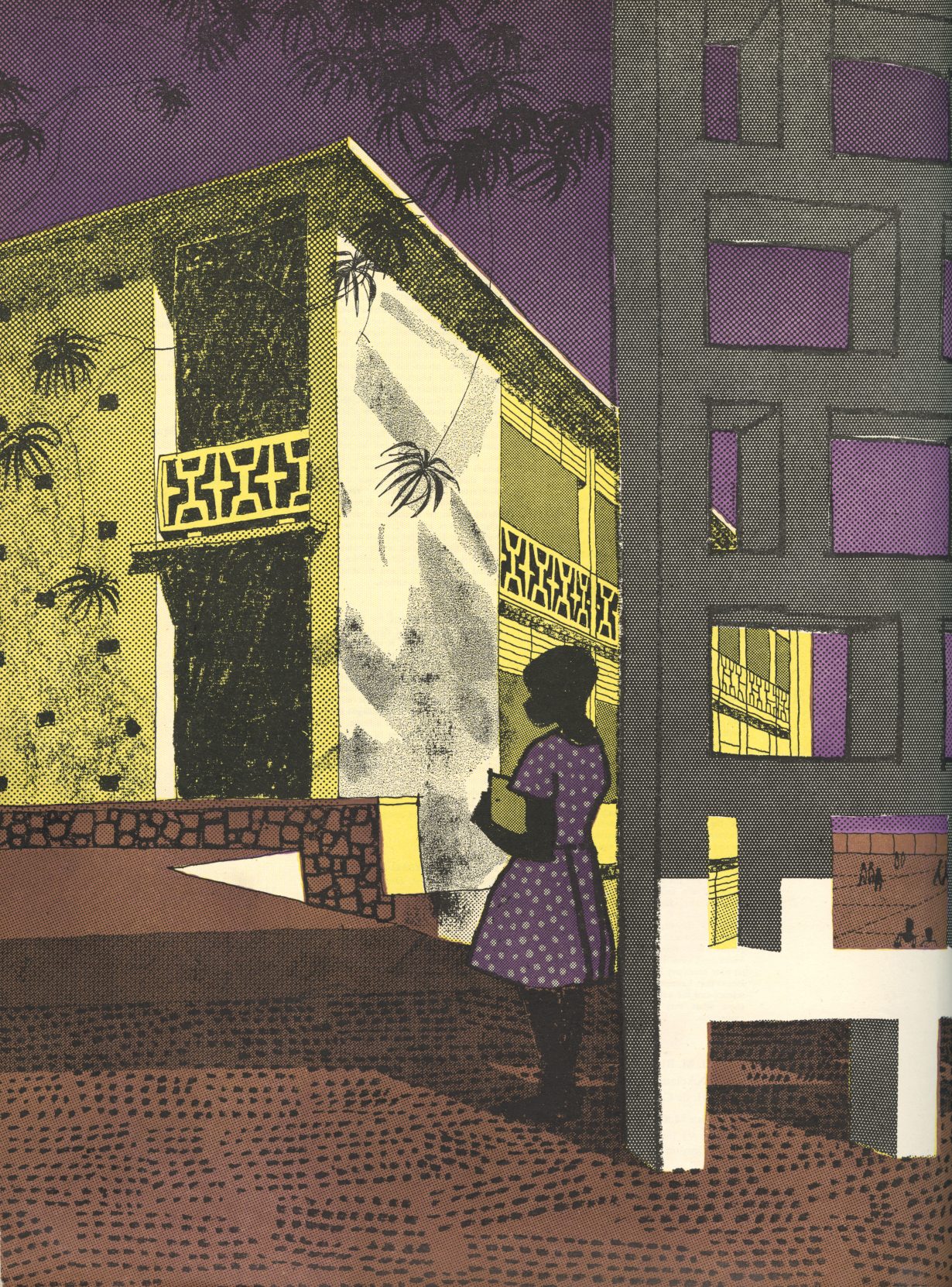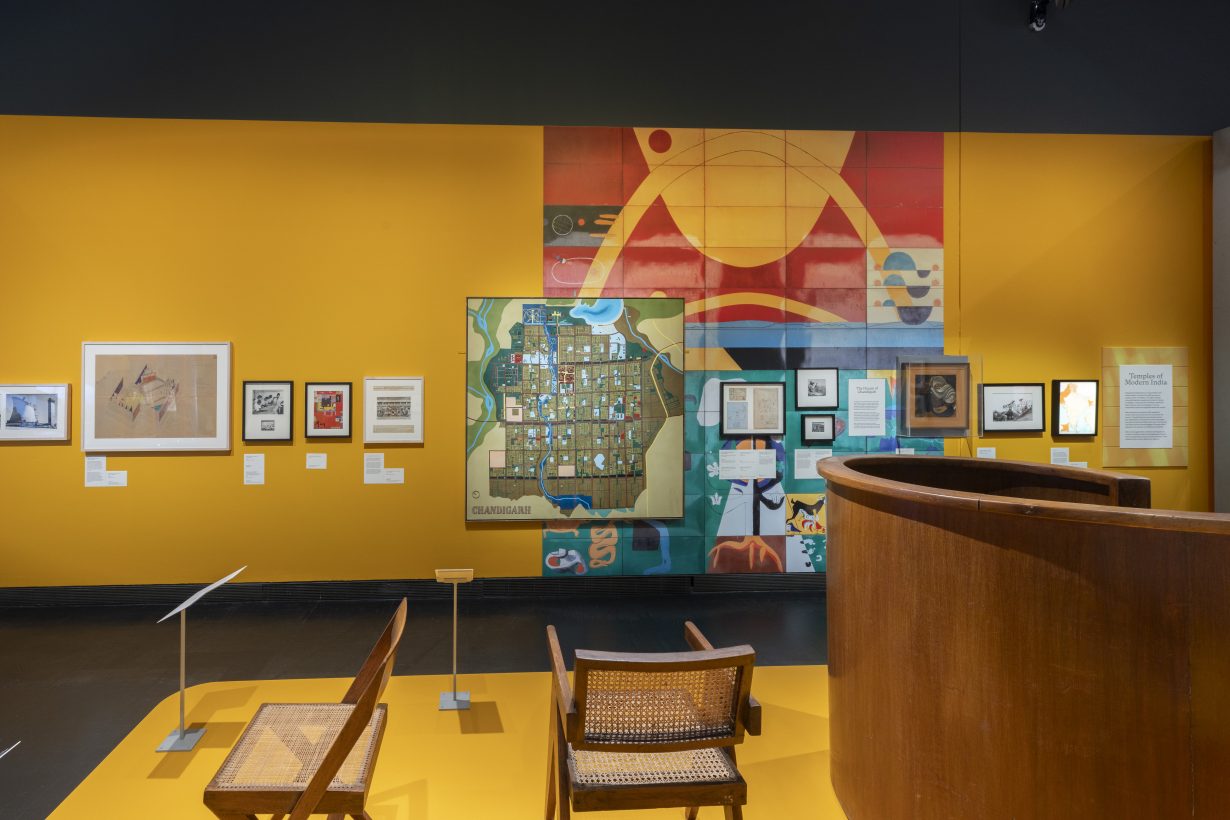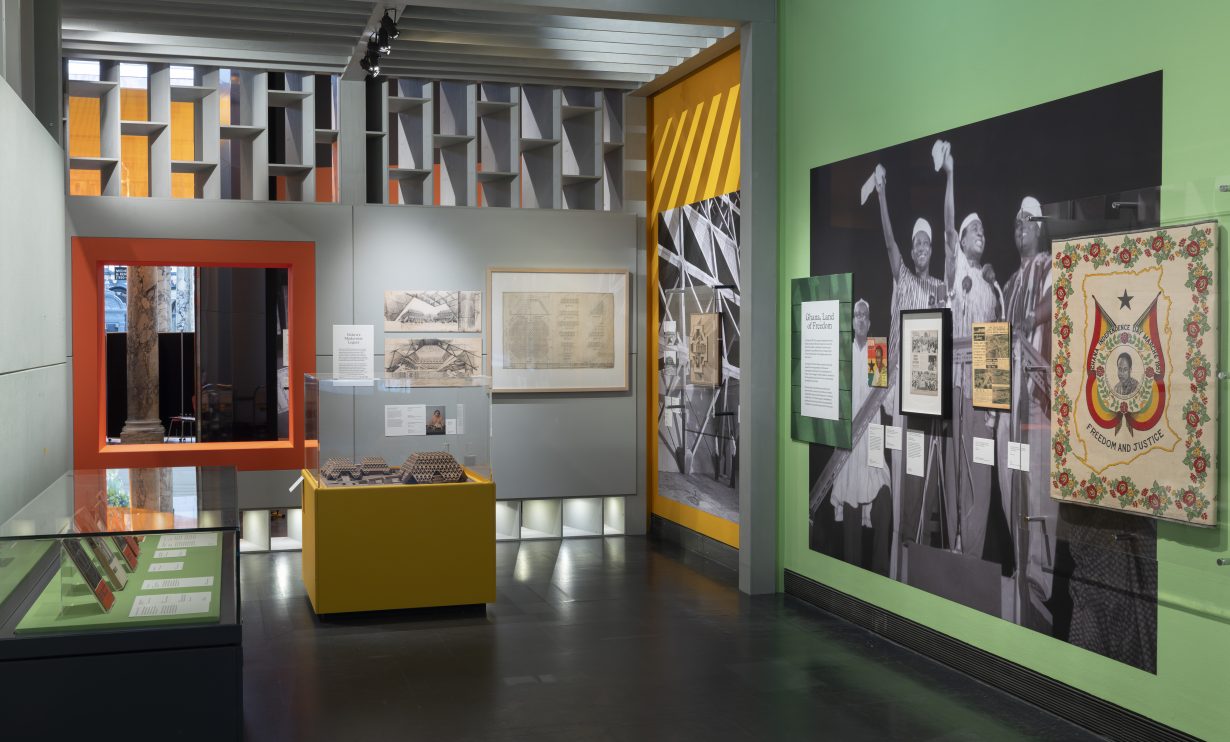
Courtesy RIBA Collections
Tropical Modernism: Architecture and Independence at the Victoria & Albert Museum, London looks at how postcolonial independence shaped modernity in India and Ghana
The most intriguing object in Tropical Modernism is not an architectural model or drawing nor a material sample or piece of furniture. It is a grid of postcards from Ghana attributed for the most part to unknown photographers, and taken between 1959 and 1971. Lent by the research group Postbox Ghana, they depict bright modernist buildings from across the country – a community centre, a store in Accra, civic buildings, social infrastructure. In among them, two cards stand in colourful contrast, depicting traditional scenes: one capturing market stalls and the other Ghanaians in Indigenous dress. Their juxtaposition with the rest of the postcards suggests two realities living side by side: the ascendant, universalist, internationalist architecture, on the one hand; taking root in a vernacular terroir on the other. Together, they are a projection of what was a new cultural confidence and a new national identity.
So much of architectural practice is the act of representation; of artistry, drawing, collaging, image-making. We imagine and draw so that others can build. It is where architecture begins, and as this compact show in the V&A’s Porter Gallery illustrates, where architecture also retires, to become something more: the archive of places, and the memory of the ideas that, in a brief moment in time, were given form. Could modernism be localised? Le Corbusier’s Chandigarh in India stands as an emphatic answer to this question: an entire capital city, it is the immersive oeuvre of tropical modernism. Invited by Fry and Drew, Le Corbusier eclipsed them and latecolonial British building initiatives to deliver something on a grand scale. But is it Indian? Punjabi? International? Does it even matter?

© Victoria and Albert Museum, London
Here the memory is that of the end of colonial history and the bright beginning of a new independent one. A seismic geopolitical shift that had an aesthetic side-story; at the heart of it was that modern-vernacular tension illustrated by the Postbox cards. It is the binary
by which modernisms of the Global South came to be. Fry and Drew are the reference point for the exhibition, which covers just two countries: India and Ghana. In the 1940s and 1950s, they designed schools and hospital buildings in Ghana as part of a last gasp of imperial charity, and were the first architects to take on the brief for Chandigarh, at the invitation of Jawaharlal Nehru, independent India’s first prime minister. The vast planned city features here through objects: a large colourful masterplan drawing, a Jeanneret chair and models of buildings such as the Tower of Shadows, which itself inspires elements of the exhibition design.
The presence of vibrancy and colour in some of the drawings and models demonstrates how modernism in the Global South deviated from its monochrome sources. One highlight is a long vertical axonometric sketch of housing in Aranya township. Its painterliness and its vignettes of people living alongside one another as neighbours captures grit and character – two qualities not typically associated with the International Style.
The modernisms forged in postwar India and Ghana were just one example of a localising of modernisms around the world. Elsewhere in Britain’s fading imperial orbit, there were Arab modernisms, ones across Africa, micromodernisms flourishing in places like Sri Lanka or Hong Kong. Beyond, there were the Latin modernisms; there were the ‘settler’ modernisms of North America and Australia. They, too, began as largely European imports and then adapted. For architects in many societies, particularly those with colonial legacies, modernism provided an opportunity to project both a sense of the ‘new’, while signalling their membership of a shared international future. But in the architecture on display here, and particularly in how it is represented, the beginnings of a new architectural approach are evident.

© Victoria and Albert Museum, London
There is a lineage between the Indian and West African modernisms and the global architecture of today, as the show demonstrates. Images of buildings by the late B . V. Doshi and lesser-known architects, such as Achyut Kanvinde’s Indian Institute of Technology, Victor Adegbite’s Black Star parade ground and projects by J. Max Bond Jr, Habib Rahman, all featured here, demonstrate a localising of modernist principles to suit climate, materiality and ideology. It is this approach that has been tested ever more pointedly in the vernacularising aesthetic of their heirs today. We see it in the work of contemporary architects such as Studio Mumbai, Francis Kéré, Yasmeen Lari or Anupama Kundoo; the exhibition ends with vox pops from some of these same practitioners. Their architecture feels nearly independent, venturing into something completely new and premodern. Their postcards from around the world today help to paint a picture of modernism’s own self-destruction.
Tropical Modernism: Architecture and Independence is on view at London’s Victoria & Albert Museum through 22 September